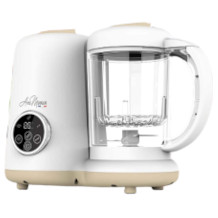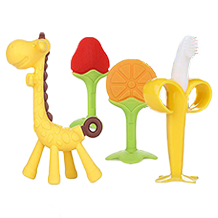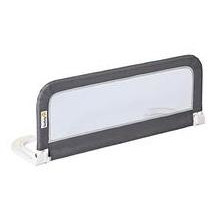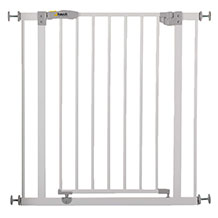Baby monitor with camera purchasing advice: how to choose the right product
- What You Need to Know
- A baby monitor with a camera creates a visible connection between parents and their child’s room so that they can always keep an eye on their sleeping offspring.
- Apart from audio-only baby monitors, there are models with their own display and those with a camera and WLAN transmission (IP baby cams).
- In addition to low-radiation operation, many parents consider ease of use, a long range and a qualitatively appealing picture and sound quality to be important.
- With additional features, such as temperature or breathing monitoring, baby monitors can be functionally adapted to individual needs.
Everything under control
As soon as babies no longer sleep in the cot right next to their parents, a baby monitor with camera comes in handy. It still allows a direct connection for constant monitoring. In this respect, a baby monitor (with or without camera) is part of the basic equipment for most parents in order to monitor the sleep of their offspring and, if necessary, to be able to have a calming effect on them. In the following article, we would like to help you find your way through the jungle of different models and highlight the most important purchase criteria.
How does a baby monitor work?
Regardless of the specific design, a baby monitor always consists of a transmitter, the baby unit, and the parent unit (with or without display). This can be an integrated display or a smartphone or other mobile device – depending on which baby monitor parents rely on.
A microphone with high sensitivity reliably transmits all sounds from the nursery, and parents can regulate the volume themselves. A camera with a night vision function ensures that the child can also be observed from a distance. Parents can then decide whether intervention is necessary or whether the child has just turned in his or her sleep, for example. In addition to pure baby monitoring, other functions make it possible to have a calming effect on the offspring from a distance.
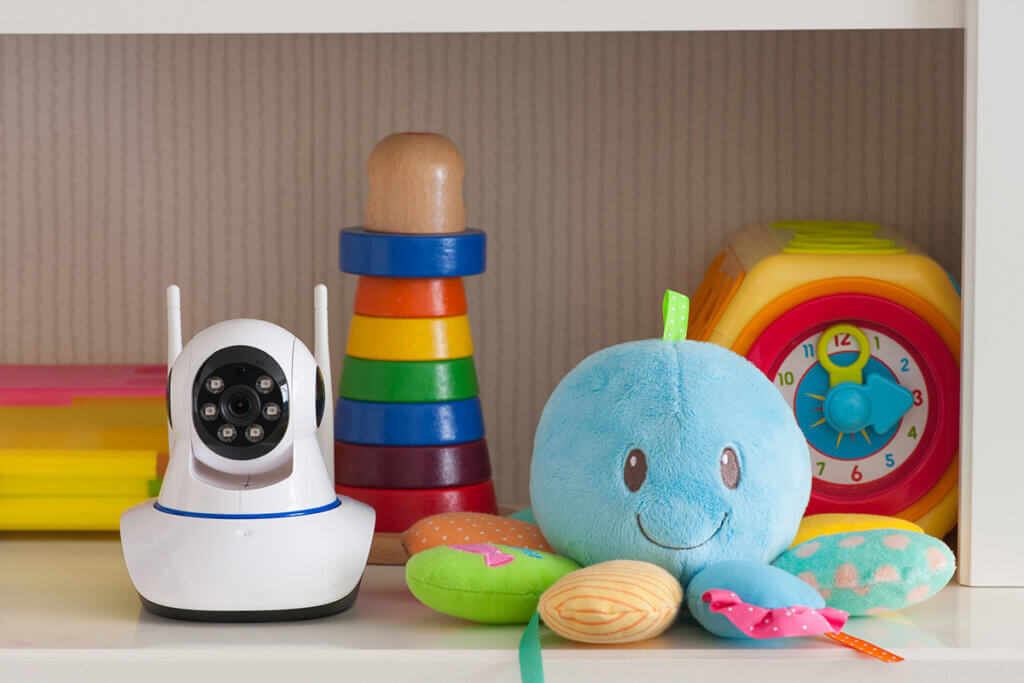
As far as signal transmission is concerned, traditional models work with radio technology (DECT, i.e. “Digital Enhanced Cordless Telecommunications”). Due to the possibilities of digitalisation, newer variants (so-called smart baby cams) work with WLAN transmission. It is important that the signal reaches the parents’ bedroom over a certain range and in good quality.
How long have baby monitors been around?
Baby monitors are a relatively recent technical achievement. They originated in the USA. Models that come close to today’s standards have been available since the early 1980s. The actual radio technology is already over 100 years old.
Is a baby monitor really necessary?
In everyday life, many occasions arise that require monitoring of the baby’s sleep. For example, if there is housework to be done during naptime, parents can always be close to their offspring, even if they are on another floor. This also applies when parents have visitors in the evening and it gets a bit noisy. The baby monitor with camera shows at all times whether the baby is asleep. The high range of modern devices (up to 300 metres) means that even greater distances can be flexibly bridged. Even during a short visit from the neighbours, the offspring is under constant control.
What are the advantages of a baby monitor with camera?
- Live image of the child, so that the sleeping position and well-being can always be assessed.
- Acoustic signals can be immediately classified by the picture
- Provides sharp images even in the dark (the baby does not notice)
- Reliable operation with high range
- Calming influence possible from a distance (e.g. intercom, lullabies and light projections)
- Sometimes targeted monitoring of breathing in case of medical necessity (additional sensor mat required)
Who is a baby monitor with camera suitable for?
A baby monitor with camera is suitable for all parents who want to hear more than just acoustic signals from the nursery. Without a picture, it is not always possible to assess whether intervention is really necessary. Many babies and toddlers are restless during sleep without waking up. If you only hear a loud noise without a picture, you might immediately rush to the child. But if you see that the child has only turned and then continues to sleep calmly, you do not have to intervene immediately – unless the prone position is not yet desired during sleep, which is the case in the first months of life.
The visual input undoubtedly opens up more possibilities for parents to assess the sleep behaviour and well-being of their offspring. In some cases, this may even be medically necessary if there is a corresponding history. As a possible preventive measure against sudden infant death syndrome, integrated breathing monitoring can be a very useful solution for parents. With increasing mobility, babies eventually manage to turn onto their stomachs. However, especially in the first months of life, experts recommend the supine position, so that parents can turn their offspring back if they notice a change in position on the baby monitor’s screen.
Is there an age limit?
The length of use has to be weighed up individually, depending on the child’s independence and the distance from the parental bedroom. Most parents use baby monitors until the child is three or even four years old, although use tends to be more sporadic as the child gets older.
The different models
Basically, parents are faced with the question of whether they want a baby monitor with sound only or also with pictures. If the decision is made in favour of a baby monitor with a camera, the following options are available:
- Wireless baby monitors with their own display
- WLAN baby monitors (with webcam and app as an example)
Baby monitors with camera and own display
With such a baby monitor, parents acquire a functional unit that can be placed anywhere in the rooms concerned. The signals are usually transmitted by radio to the parent unit in the bedroom using the DECT standard. Since it is a complete system, parents do not have to buy, let alone integrate, any other components except for the installation and configuration. The main thing to adjust is the volume at which the acoustic signals are to arrive in the parents’ bedroom. The brightness of the picture can also be adjusted to one’s own wishes so that it does not become too bright in the bedroom itself. In contrast to the alternative presented below, a baby monitor with its own display has the following advantages and disadvantages:
Pro Points
- Functional unit ready for immediate use
- No WLAN reception necessary
- Energy-saving and low-radiation modes with many units
- More options thanks to additional features
Drawbacks
- Battery life limited in normal operating mode
- Almost no alternative usage options
- Range and possible interfering factors set the framework for use
Baby monitors with camera and WLAN transmission
For those who cannot or do not want to opt for a ready-made set for baby monitoring, this option offers flexible possibilities. In some cases, existing technology can be used so that parents can build their own individual monitoring solution.
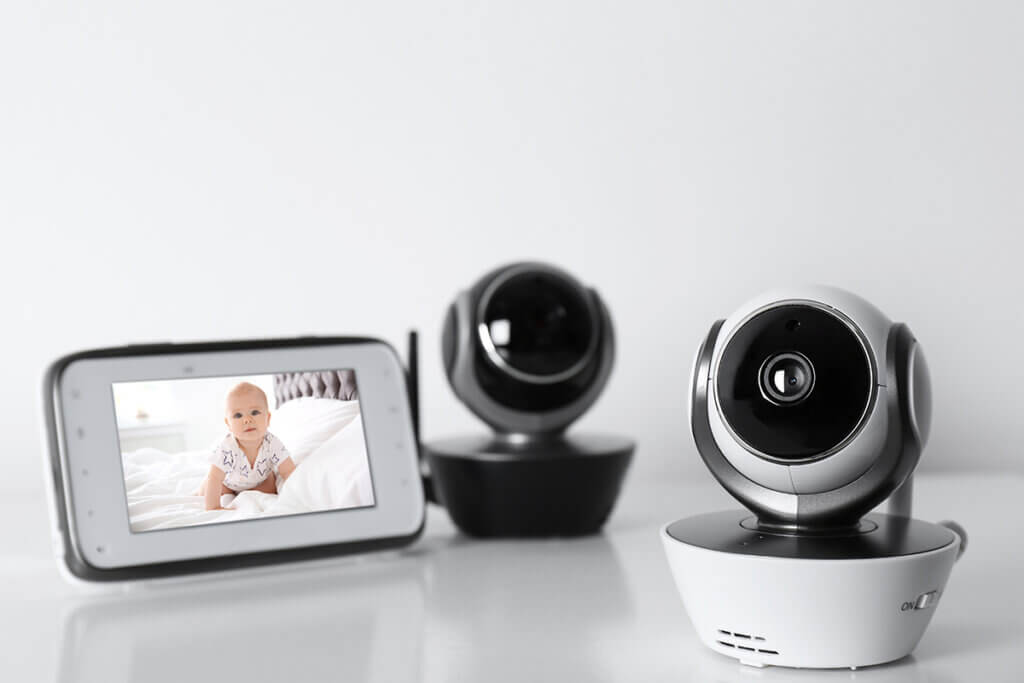
Parents can find complete sets in the shops that contain a webcam and a receiver unit with a screen. Data transmission for these models is not via radio, but via WLAN. The advantage is that the webcam can also be used for other purposes. If you don’t want to buy such a set, you can also use a suitable camera with WIFI transmission and your own smartphone.
There are now numerous apps that allow the smartphone to be used as the parent of a baby monitor. However, this self-configured solution is probably only something for temporary use, as the smartphone is usually in use elsewhere. Other mobile devices such as a laptop or tablet could also be used for the necessary video transmission. The only question then is where these devices should be placed in the bedroom and how bright they themselves are. After all, it cannot be the goal that parents themselves lose sleep due to too bright light.
Pro Points
- Camera can also be used for other purposes
- Cost savings if existing devices are used
- Individual configuration options (mobile devices as parent unit)
- Transmission via WLAN network rather than the more limited radio range
- Less radiation during operation
Drawbacks
- Privacy at risk as soon as router is vulnerable
- In the case of do-it-yourself construction, functions for baby monitors are missing
What matters when buying
Parents buy a baby monitor with camera primarily because they want to enjoy more security in everyday life. Accordingly, many parents deal intensively with the question of which baby monitor with camera is the right one for them. The following purchase criteria prove to be central in practice, whereby a weighting is to be carried out with regard to one’s own requirements.
Handling and control displays
A single quick glance must show what is going on with the offspring. In general, the user interface should be clear and intuitive. Parents who are torn out of their sleep certainly don’t want to torture themselves through a complex menu. Everything should be controllable with a flick of the wrist so that there is no unnecessary fuss. In addition, the user interface should allow individual adjustment options. This applies above all to the volume of the acoustic signal and the brightness or contrast of the screen. Some devices display the noise level graphically, which is helpful if the volume tends to be at a low level.
The range of functions: What should the baby monitor with camera be able to do?
Night vision and an intercom function can now be taken for granted as standard. Playable melodies for falling asleep or for calming down can be a real added value for parents. Some baby monitors can also project a starry sky onto the ceiling. Since babies and toddlers should generally sleep at a cool room temperature of about 18 degrees, an integrated temperature sensor is more than just a nice gimmick. A usable zoom function is helpful to take a very close look at the offspring. This way, for example, the question can be answered whether the dummy is still in the mouth.
Reliability as a qualitative must
No matter what functions the baby monitor has and how the signal is transmitted to the parents: Parents must be able to assume that it functions reliably. After all, what good is a baby monitor if it fails to do its job several times during the night and thus does not let parents hear anything? In view of this, a look at the summary of tests on baby monitors in the final chapter is certainly also helpful for the purchase decision.
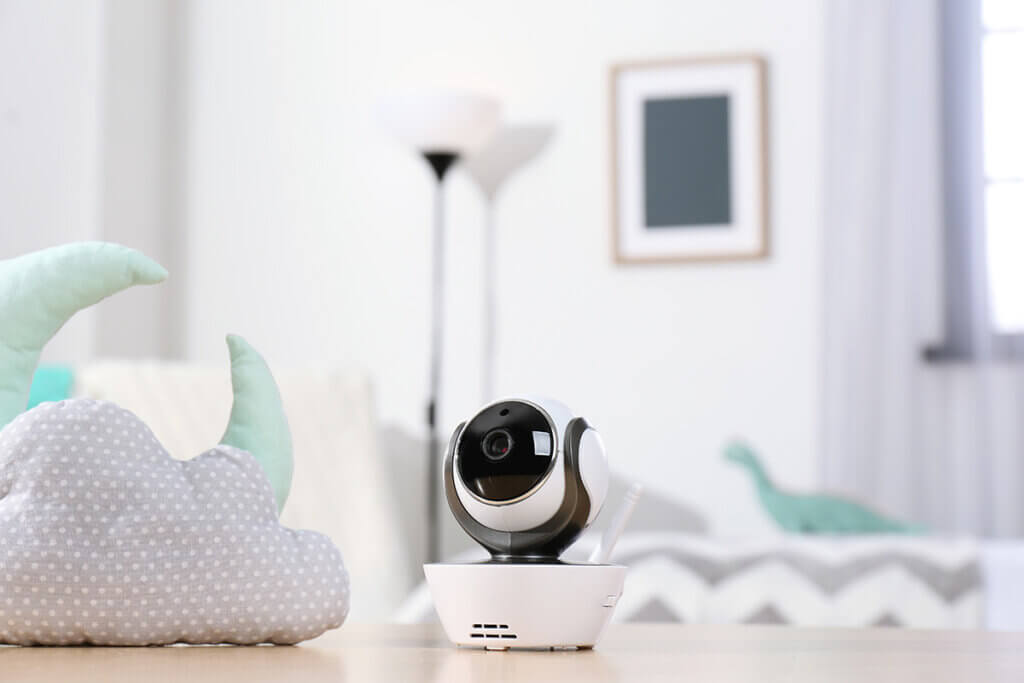
Sound and picture quality
The factors of picture and sound quality are also part of technical reliability. The transmitted images must be so good that they answer more questions than raise doubts. The built-in microphone must also be of high quality. Otherwise, parents may spend sleepless nights due to annoying background noise – even though their offspring are sleeping peacefully.
Check screen size: Everything in view?
A small but important detail is the size of the screen. Parents should make sure that the screen is large enough to allow them to see the situation from a distance. Of course, where the parent will be placed later plays a role here. Parents should already take this into account when choosing the screen size. Generally, most baby monitors have screen sizes between 2 and 3.5 inches. Those who integrate their own terminal device with WLAN transmission can use a much larger screen.
The modes: low radiation exposure during operation and battery
Ideally, the manufacturer provides information on this aspect or offers a so-called eco-mode that reduces radiation exposure to a minimum. Due to strict specifications and tests, it can be assumed that relevant maximum values are complied with and that there are no health concerns even in the case of long-term use.
The range
A look at the manufacturer’s specifications shows that most baby monitors with a camera have a range of 200 to 300 metres. That should be enough to move freely around the house or garden. It is then necessary to check on site whether there are any structural obstacles that could severely interfere with the radio signal. In general, the range of modern baby monitors is absolutely sufficient for almost all areas of application. Solutions with WLAN transmission generally open up a greater range.
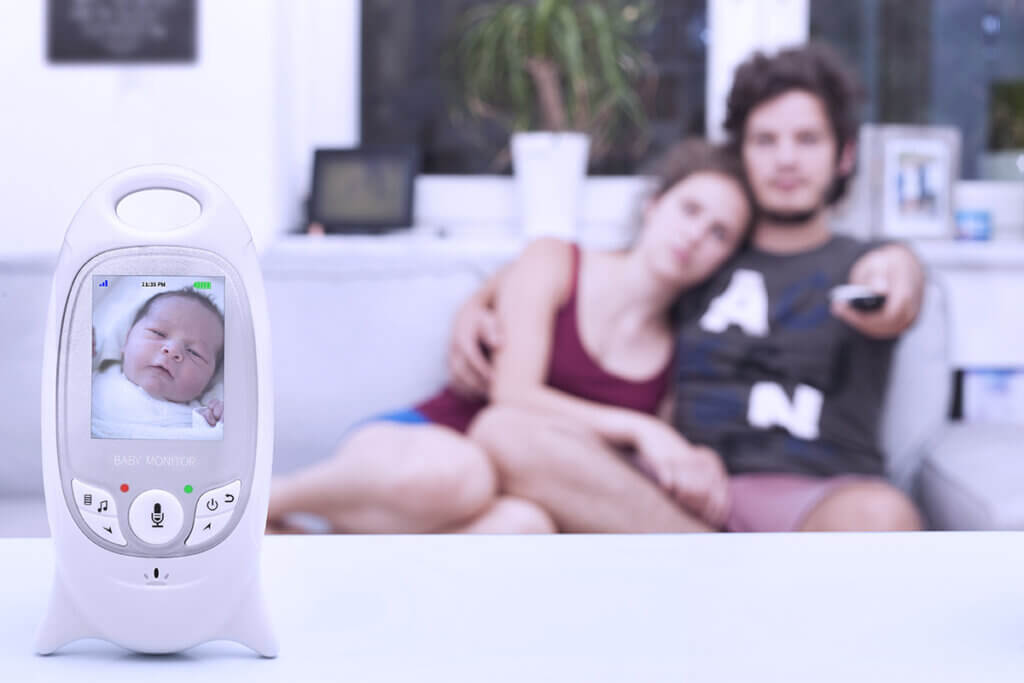
Long battery life to increase flexibility
If you want or need to use the baby monitor independently of a power source, you should check the information on battery life. The camera component is usually powered by electricity, while the parent unit is often battery-operated. It should be remembered that the operating mode can have a significant effect on the battery life. The brightness of the display also plays a not insignificant role. To begin with, parents should test how long the battery life really is. After all, nothing would be more annoying than a baby monitor that stops working at night or beeps loudly to indicate that the battery is running out.
Additional features
Those who opt for additional features such as a snooze light, lullabies or a humidity indicator enjoy the advantage of not having to set up additional devices for these functions at a later time. If there is a corresponding medical indication, a baby monitor with camera can also be used to monitor breathing. A special sensor mat is then used in the bed in order to be able to use an even larger database. A motion sensor is particularly useful for mobile toddlers who undertake daring climbing manoeuvres at night.
Care tips and tips for use
It is obvious that the camera and parent unit contain sensitive technology. Therefore, falls should be avoided in order not to damage the components of the baby monitor. From a preventive point of view, the location is important: the baby monitor should stand securely and be out of the reach of small children. Check whether the manufacturer provides mounting options.
Experience has shown that the battery of baby monitors in particular requires care. Parents should always follow the manufacturer’s instructions in this regard. As a rule, the battery should be fully charged before the first use. The battery does not need to be completely drained before recharging. This can even have a negative effect on the life of the battery. Under no circumstances should the battery be constantly connected to the power supply during operation, otherwise it will eventually no longer function reliably without a power source.
High temperatures should generally be avoided for such sensitive technology. The baby monitor should not be exposed to direct sunlight outdoors or on holiday. Excessive humidity in the air can also have a lasting negative effect on the function. In view of this, the bathroom is not the right place to store a baby monitor when not in use. A dry and light-protected storage place is perfect.
How parents set up the baby monitor with camera correctly
When parents set up the baby monitor, they usually have two concerns:
- See an optimal picture of their child
- To keep possible radiation as far away from the child as possible.
Therefore, experts recommend keeping a minimum distance of one metre. This also ensures that more mobile toddlers cannot reach the camera. To minimise potential radiation exposure, battery operation is clearly preferable. If available, parents should opt for eco mode during operation. This way, the battery life can be extended and at the same time the radiation exposure is noticeably reduced. In eco mode, a baby monitor only transmits sounds that reach a certain level. Thanks to the additional image, parents can always assess the situation in its entirety anyway.
Fig. 1: © Julia Albul / stock.adobe.com | Fig. 2: © New Africa / stock.adobe.com | Fig. 3: © New Africa / stock.adobe.com | Fig. 4: © tiagozr / stock.adobe.com

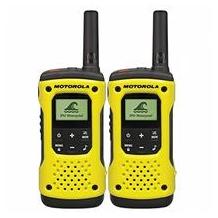
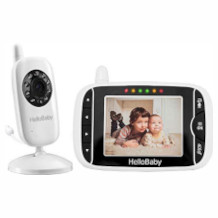












 10 reviews
10 reviews

